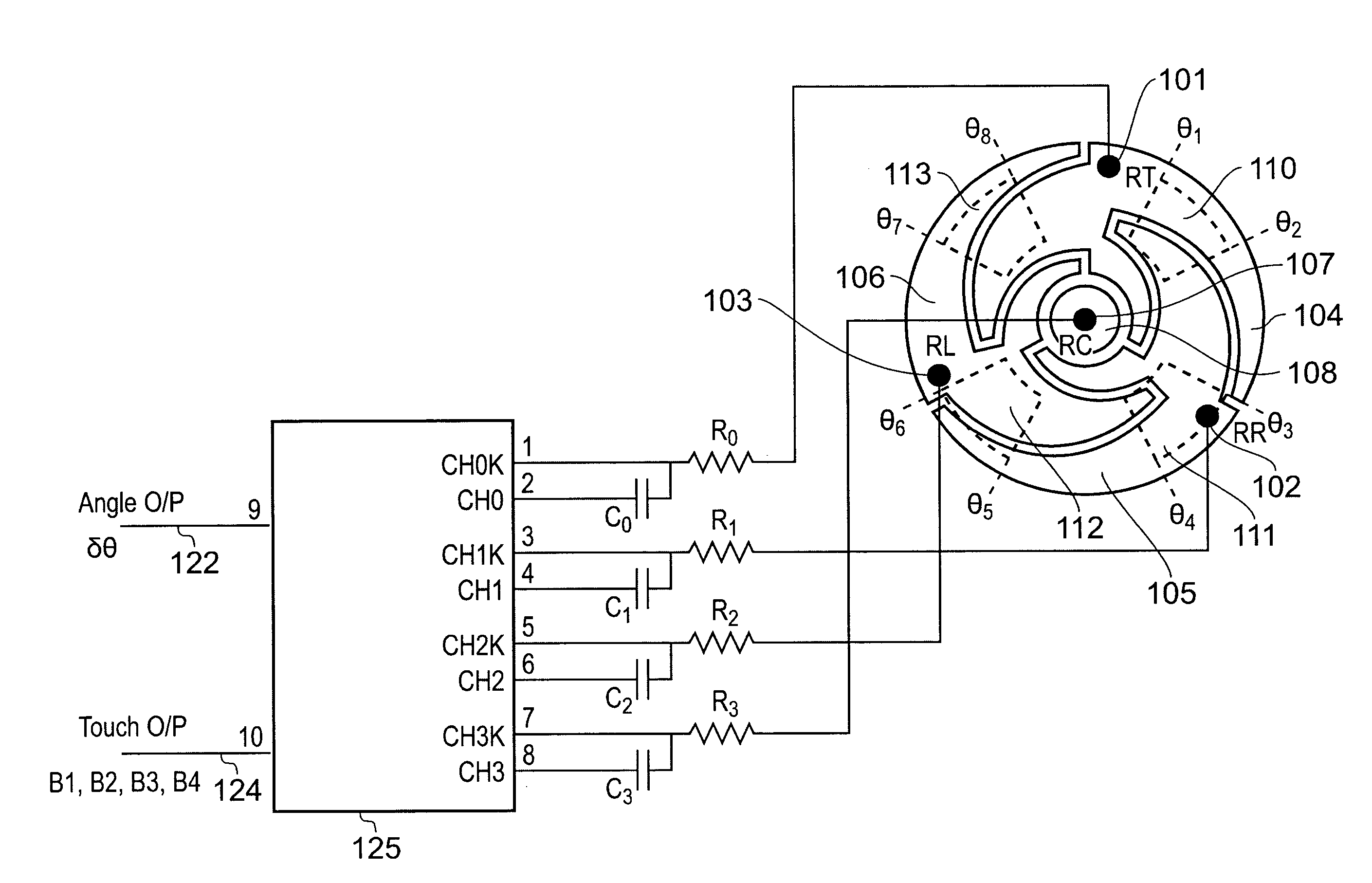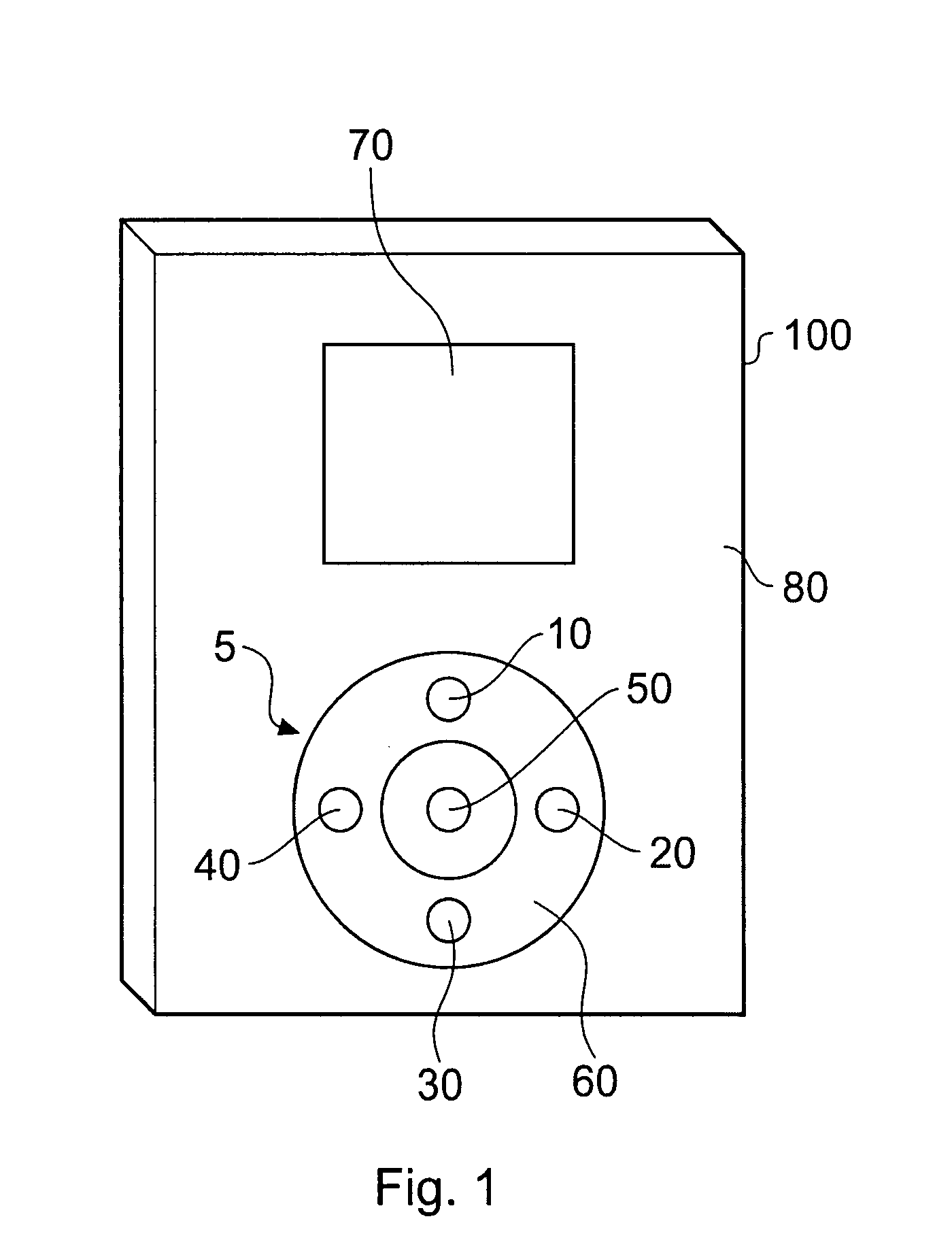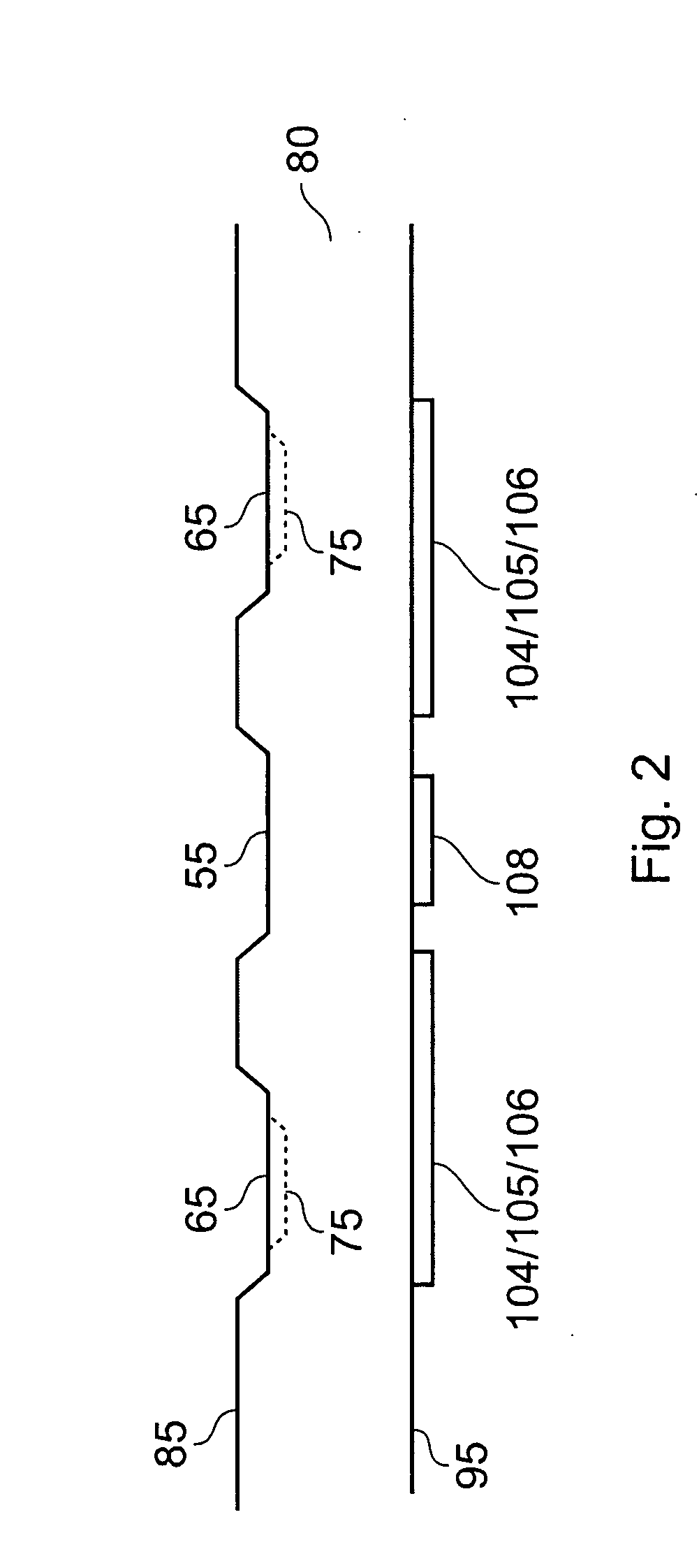Capacitive Position Sensor
a position sensor and capacitive technology, applied in the field of capacitive position sensors, can solve the problems of inability to meet the current generation of non-mechanical transducers, significant demand for capacitive material displacement sensors, etc., and achieve the effects of low power consumption, simple design, and high reliability
- Summary
- Abstract
- Description
- Claims
- Application Information
AI Technical Summary
Benefits of technology
Problems solved by technology
Method used
Image
Examples
Embodiment Construction
[0051]FIG. 1 illustrates an embodiment of the invention showing a mobile phone.
[0052] Referring to FIG. 1, there is illustrated an embodiment of the invention showing a mobile phone 100 having a multi-function sensor 5 comprising an annular sensing element 60 forming a so-called wheel, discrete sensing buttons 10, 20, 30, 40 formed within the area of the sensing element 60, and a central sensing button 50. A display 70 is also shown located above the sensor area. The display 70 and multi-function sensor 5 are formed in a front panel 80 of the device which may be made of a suitable plastics material or another material of choice such as glass, a ceramic material, a composite material, or a natural material such as wood or a wood veneer. It may also be painted.
[0053] It will be appreciated that in other embodiments the device could be a music player, radio, games console, remote controller or a device combining multiple ones of the above-mentioned functions of phone, music player, v...
PUM
 Login to View More
Login to View More Abstract
Description
Claims
Application Information
 Login to View More
Login to View More - R&D
- Intellectual Property
- Life Sciences
- Materials
- Tech Scout
- Unparalleled Data Quality
- Higher Quality Content
- 60% Fewer Hallucinations
Browse by: Latest US Patents, China's latest patents, Technical Efficacy Thesaurus, Application Domain, Technology Topic, Popular Technical Reports.
© 2025 PatSnap. All rights reserved.Legal|Privacy policy|Modern Slavery Act Transparency Statement|Sitemap|About US| Contact US: help@patsnap.com



